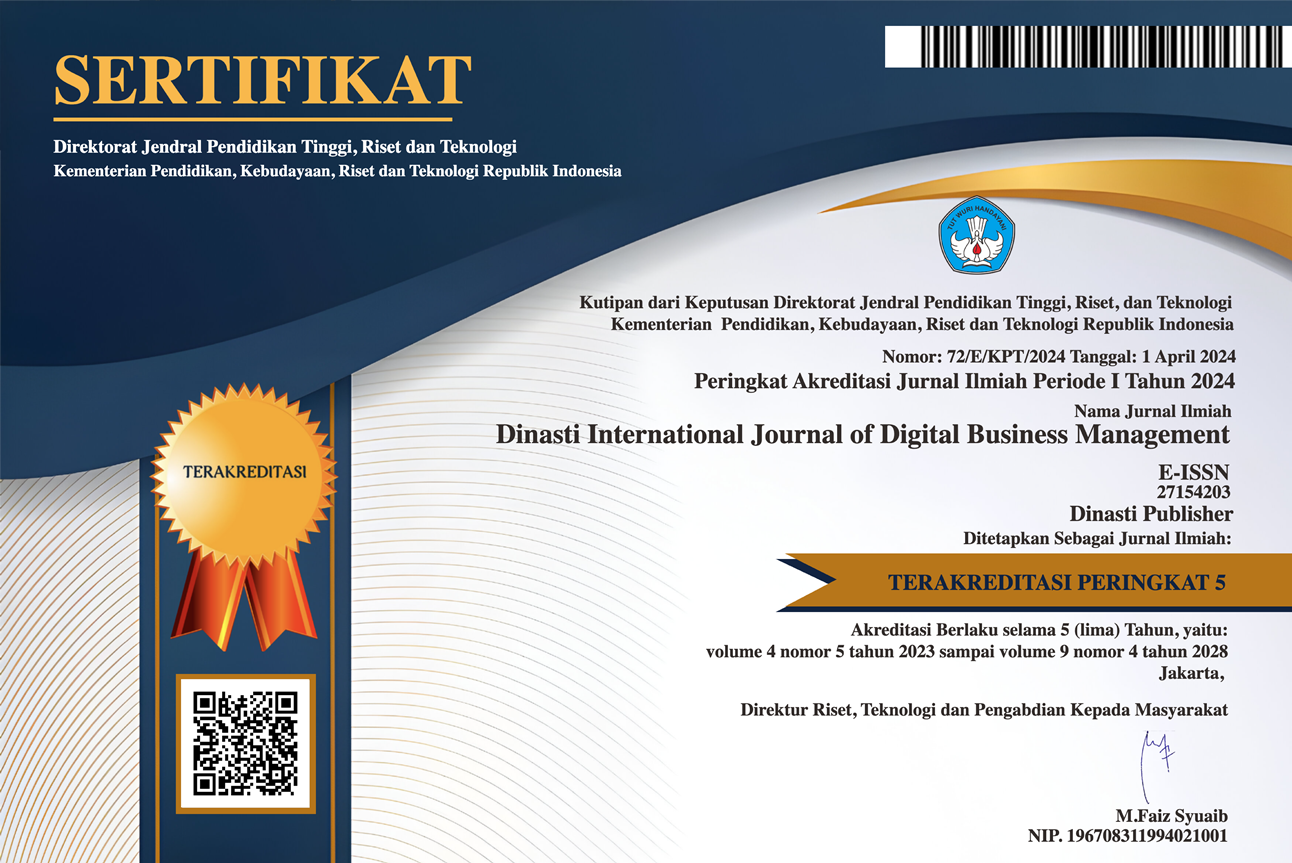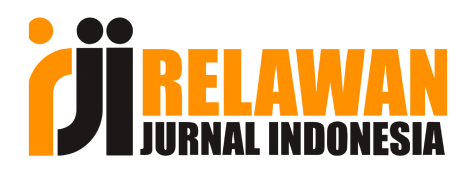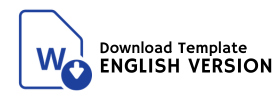THE OPTIMIZATION OF LEADERSHIP MEDIATION, WORK ENVIRONMENT, AND COMMUNICATION FOR EMPLOYEE PERFORMANCE IN DISTRICT SERVICE DIVISION IN PT. STATE ELECTRICITY COMPANY
DOI:
https://doi.org/10.31933/dijdbm.v2i1.640Keywords:
Leadership Style, Work Environment, Communication, Work Spirit, Employee PerformanceAbstract
This study identifies and analyzes optimization by work morale to mediate leadership style, work environment, and communication on the performance of employees of PT. State Electricity Company (PLN PERSERO) Customer Service Unit. This research was conducted using a quantitative, descriptive approach. The population in this study were employees of PT. State Electricity Company (PLN PERSERO) of the Customer Service Unit, amounting to 48. We use path analysis techniques to determine the direct and indirect relationship between leadership style, work environment, and communication on employee performance. As well as how the enthusiasm of work mediates the variables of leadership, work environment, and communication on the performance of employees in the Nuisance Services Division at the PT State Electricity Company, Network Service Unit. The results of this study conclude that (1) leadership style has a positive effect on morale, (2) leadership style directly has a positive effect on work performance, (3) work environment has a positive effect on morale, (4) the work environment directly has a positive effect on work performance. (5) Communication has a positive effect on morale, (6) communication directly has a positive effect on work performance, (7) work performance has a positive effect on morale. (8) Leadership style indirectly positively influences work performance through work morale as an intervening variable, (9) work environment has a positive effect on work performance through work morale as an intervening variable, (10) communication style positively influences work performance through work morale as an intervening variable in service division employees at PT. State Electricity Company (PLN PERSERO) Customer Service Unit.
References
Danang Sunyoto. (2015). Management and Development of Human Resources. Yogyakarta: Center for Academic Publishing Service.
Fachreza, Musnadi, S., & Majid, M. S. A. (2018). Pengaruh Motivasi kerja, lingkungan kerja, dan budaya organisasi terhadap kinerja karyawan dan dampaknya pada kinerja Bank Aceh Syariah di Kota Banda Aceh. Jurnal Magister Manajemen, 2(1)
Gabcanova, I. (2012) ‘Human Resources Key Performance Indicators’, Journal of Competitiveness. doi: 10.7441/joc.2012.01.09.
Hasibuan SP Malayu, 2000, Manajemen Sumber Daya Manusia, Jakarta : PT.Gunung Agung.
Handoko, Hani, 1999. Manajemen Sumber Daya Manusia, Yogyakarta : BPFE, UGM.
Ike, Kusdyah. 2012. Price Perception, Brand Perception, Value Perception, and Desire to Repurchase Health Clinic Services (Case Study of ERHA Clinic Surabaya). Journal of Marketing Management, Vol. 7, No. 1, April 2012.
Khairiyah dan Nur Syaima Annisa. “Effect of Job Satisfaction, Leadership Style, and Work Motivation on Employee Performance at PT Nutricia Indonesia Sejahtera, Journal of Proceeding "PESAT (Psychology, Economics, Literature, Architecture & Civil Engineering), Vol. 5, inside https://media.neliti.com/media/publications/171954-ID-pengaruhkepuasankerja gayakepemimpina.pdf
Kreitner, Robert dan Angelo Kinicki. 2014. Organizational behavior. Edition no.9. Book no. 1.Jakarta: Salemba Empat.
Moeheriono. 2014. Competency Based Performance Measurement. Cetakan kedua. Jakarta.
Pabundu Tika. (2014). Organizational Culture and Improvement of Employee Performance. Jakarta : Bumi Aksara.
Safroni, 2012, Management and Reform of Public Services in the Context of Indonesian Bureaucracy (Theory, Policy and Implementation), Yogyakarta: Aditya Media Publishing.
Setiaji, Bambang, 2004. Panduan Riset Dengan Pendekatan Kuantitatif, Program Pascasarjana UMS, Surakarta : Fakultas Ekonomi ± UMS.
Resources, H. (2011) ‘Human Resources Management?: Managing Employee Performance’, Review Literature And Arts Of The Americas.
Shi, L., Sheng, L. and Liu, Q. (2013) ‘Study on relationships among high-performance work practices system, quality management practices and organizational learning’, Journal of Applied Sciences, pp. 3310–3314. doi: 10.3923/jas.2013.3310.3314.
Siagian. Sondang P. 2012. Human Resource Management, Bumi Aksara.
Sugiyono. (2016). Quantitative, Qualitative, and R&D Research Methods. Bandung: PT Alfabet.
Downloads
Published
Issue
Section
License
Authors who publish their manuscripts in this journal agree to the following conditions:
- The copyright on each article belongs to the author(s).
- The author acknowledges that the Dinasti International Journal of Digital Business Management (DIJDBM) has the right to be the first to publish with a Creative Commons Attribution 4.0 International license (Attribution 4.0 International (CC BY 4.0).
- Authors can submit articles separately, arrange for the non-exclusive distribution of manuscripts that have been published in this journal into other versions (e.g., sent to the author's institutional repository, publication into books, etc.), by acknowledging that the manuscript has been published for the first time in the Dinasti International Journal of Digital Business Management (DIJDBM).















































